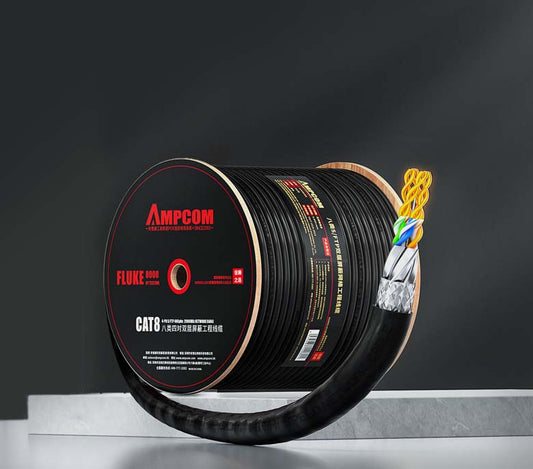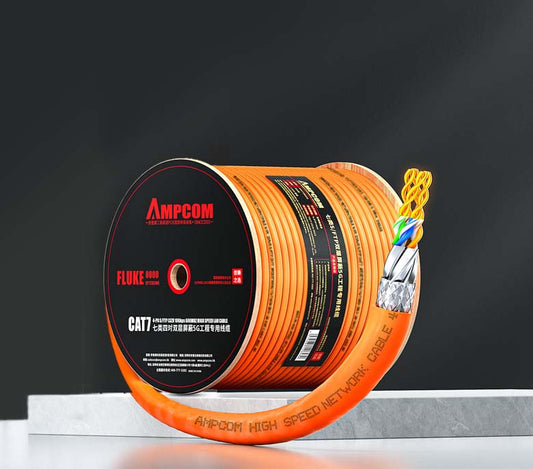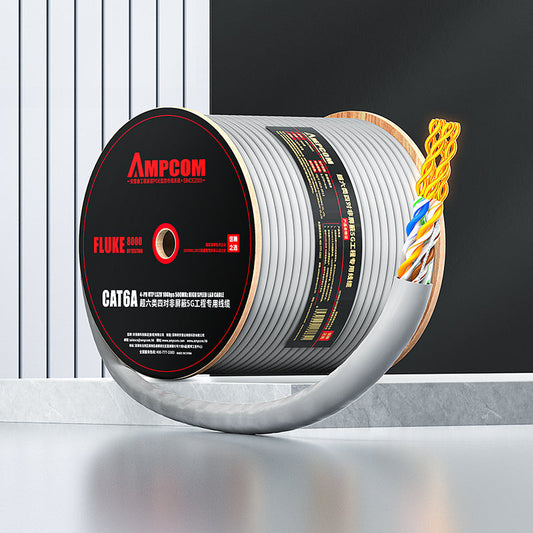Why Oxygen-Free Copper (OFC) is the Best Choice for High-Performance Ethernet Cables?
When it comes to selecting the right materials for your Ethernet cables, the choice of conductor is just as important as the speed or bandwidth it can support. Oxygen-free copper (OFC) is increasingly the material of choice for network engineers and businesses looking for superior performance in their networking setup. This blog will explore the unique benefits of oxygen-free copper, explaining why it’s often the better choice compared to traditional copper for Ethernet cables, especially in high-performance or critical network environments.
Oxygen-free copper is a specially refined type of copper that has a very low oxygen content, typically 0.001% or lower. This is achieved by using a high-temperature process that removes most of the oxygen in the copper, resulting in a much purer form of copper compared to the standard copper found in many common cables. The reason this process is important comes down to conductivity and durability. Oxygen-free copper offers better electrical conductivity, which helps maintain signal integrity across longer distances and under more demanding conditions. In simple terms, OFC cables allow data to move faster and more reliably than cables made from standard copper.
When Oxygen-free copper is used in Ethernet cables, you are essentially opting for a material that reduces the risk of signal degradation over distance. Traditional copper cables, especially those with impurities or higher oxygen content, experience more signal loss over longer runs. This can result in slower data speeds, less stable connections, and increased network interruptions. In contrast, OFC cables offer superior signal integrity and can cover much longer distances without significant performance loss, making them an ideal solution for large-scale networks, data centers, or setups that demand high-speed connectivity over long distances.
The reason Oxygen-free copper cables perform better lies in their resistance to oxidation and corrosion. Over time, copper with higher oxygen content can oxidize, leading to poor connectivity and reduced lifespan of cables. Oxygen-free copper, however, has a much lower oxidation rate, making these cables more durable in challenging environments. This feature is especially beneficial for industries that rely on networks exposed to higher levels of moisture or fluctuating temperatures. For instance, in data centers, maintaining reliable connectivity is paramount, and the durability of OFC Ethernet cables ensures fewer maintenance calls and reduced downtime.
While Oxygen-free copper offers undeniable benefits, it’s important to note that 99.9% copper cables are still common and can be suitable for less demanding environments. They provide a good balance between price and performance for home networks or smaller setups. However, for enterprise networks, high-performance applications, or environments where data reliability is critical, OFC Ethernet cables are the best option. If your company deals with high-speed data, long cable runs, or interference-prone environments, investing in OFC cables can significantly improve network reliability and speed.
As Oxygen-free copper cables are becoming the standard in high-performance network setups, many businesses are opting for these cables despite the higher initial investment. The benefits are clear: faster speeds, less signal loss, higher durability, and a longer-lasting solution for demanding networks. For environments with high traffic, low-latency applications, or complex systems, choosing OFC Ethernet cables ensures that you’re investing in the future-proof quality of your network.
Ultimately, the choice between traditional copper and Oxygen-free copper cables comes down to your network’s specific needs. OFC Ethernet cables are an excellent choice when you need low signal degradation, maximum speed, and durability. If you're planning for the future of your network, OFC cables should be on your radar for the next major upgrade.
For more detailed information on how Oxygen-free copper improves network performance, be sure to check out our comprehensive guide on choosing the best Ethernet cables for your business network at AMPCOM Ethernet Cable Selection.
FAQ:
1. What is Oxygen-Free Copper (OFC) and why is it used in Ethernet cables?
Oxygen-Free Copper (OFC) is a highly refined copper with minimal oxygen content, offering superior conductivity and durability compared to standard copper. It is commonly used in Ethernet cables to ensure better signal integrity and reduced signal loss, especially over long distances or in high-performance networks.
2. How does Oxygen-Free Copper improve network performance?
OFC cables provide better electrical conductivity, reducing signal degradation over longer distances. This results in higher speeds, more stable connections, and improved reliability, making them ideal for large-scale networks, data centers, or environments that require high-speed data transfer with minimal interruptions.
3. Are OFC Ethernet cables worth the investment over standard copper cables?
Yes, despite the higher cost, OFC Ethernet cables offer long-term benefits such as greater durability, better signal integrity, and resistance to oxidation. These advantages make OFC cables an excellent investment for high-performance applications or businesses that require maximum network reliability.
4. Can OFC Ethernet cables handle high-interference environments better than regular copper cables?
Absolutely. OFC cables are more resistant to oxidation and corrosion, providing superior performance in high-interference environments such as industrial settings, data centers, or areas with heavy electrical equipment, ensuring stable and reliable data transmission.
5. How do I know if my network needs Oxygen-Free Copper Ethernet cables?
If your network requires high-speed data transmission over long distances or operates in an environment with high electromagnetic interference, OFC cables are the best choice. They are ideal for data centers, enterprise networks, or any setup where performance and durability are critical.



